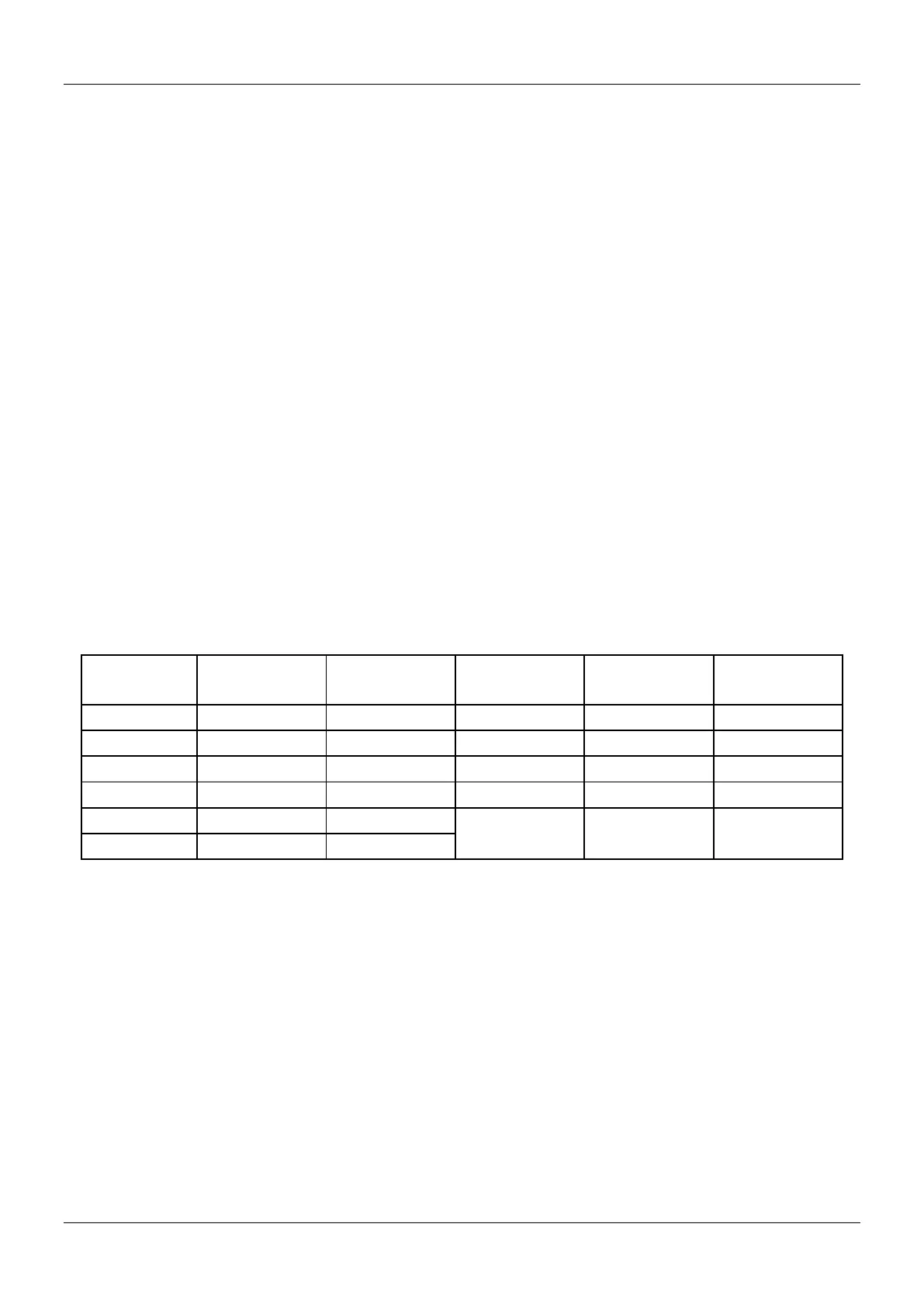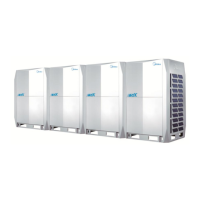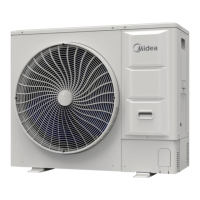MCAC-VTSM-2015-10 R410A All DC Inverter V5 X Series 50Hz
Installation 117
11. Vacuum Drying
11.1 Purpose and main points of vacuum drying
11.1.1 Purpose of vacuum drying
1. Remove moisture from the system to prevent ice-blockage and copperizing. Ice-blockage will cause
abnormal operation, while copperizing may damage compressor.
2. Eliminating the non-condensable gas of system prevents oxidizing of internal components, system pressure
fluctuation, and low heat exchange performance.
3. Detect leak source from reverse rotate.
11.1.2 Selection of vacuum pump
1. Vacuuming suction must be less than -756mmHg.
2. The discharge of vacuum pump is over 4L/s.
3. The precision of vacuum pump is over 0. 02mmHg.
R410A system caution:
After the vacuuming process of R410A refrigerant circulation system is complete, vacuum pump will stop
running. As a result of suction in the in the air conditioning system, vacuum pump lubricant will seep back into
the system. This, same situation will also occur if vacuum pump suddenly stops during operation. This will
cause different oils mix, leading to system malfunction, it is therefore recommended to use one-way valve to
prevent reverse flow of oil in vacuum pump.
11.1.3 Vacuum drying for piping
Vacuum drying: Use of vacuum pump effectively transfers moisture in lines from liquid to gas state. Typical
boiling point for water is 100
o
C the vacuum pump reduces the internal pressure of the piping system thus
reducing the boiling point of water to room temperature. This process evaporates all moisture in the piping
system.
Boiling Point of
Water (°C)
Boiling Point of
Water (°C)
11.2 Operation procedure
There are two vacuum drying methods: common and special.
11.2.1 Ordinary vacuum drying
1) Connect the pressure gauge to the infusing mouth of gas and liquid pipe, keep vacuum pump running for at
least 2 hours, ensures vacuum degree o is below -755mmHg.
2) If the vacuum degree is not below -755mmHg after 2 hours of drying, system will continue drying for one
hour.
3) If the vacuum degree is not be below -755mmHg after 3 hours of drying, check the system for leaks.
4) Vacuum placement test: when the vacuum degree reaches -755mmHg, keep for 1 hour. If the vacuum
gauge indicator does not increase, the process is complete. If the vacuum gauge increases, it indicates of
moisture or a leak.
5) Vacuum drying shall be conducted from liquid and gas pipe simultaneously. There are a lot of functional
parts like valves, which could shut down the gas flow midway.
11.2. 2 Special vacuum drying
Special vacuum drying method shall be adopted when:

